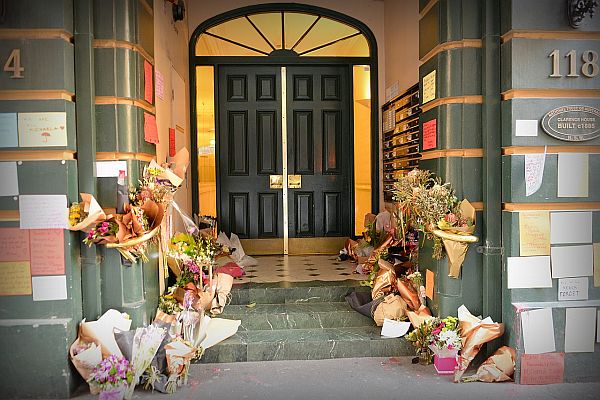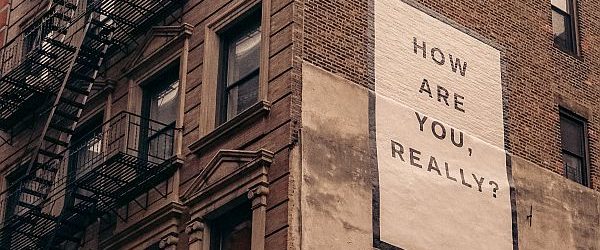In the immediate aftermath of the spree violence that left one dead and another injured in Sydney’s CBD on Tuesday 13 August, local media raced to join the dots as pop psychology was subsumed into a live police procedural drama. Over a week later, the conclusion appears to be that one individual by the name of Mert Ney and his personal madness are the cause of the carnage. The claim does nothing to address the dire failures of Australia’s mental health system and ignores a constellation of other factors that contributed to the tragedy. Yet this response is representative of a larger international trend which is increasingly putting all members of society, regardless of mental health, at risk of institutional violence.
Discourses of madness surround most crimes where motive appears unclear to the media, and because victims of spree violence are often randomly selected, motive is equally nonsensical. NSW Police Commissioner Mike Fuller summed this up when he said: ‘I think anyone who commits an act of mass killings, I mean how can they not be mentally ill I suppose.’ We saw similar coverage in 2014 after the Sydney hostage crisis as Man Haron Monis’ sanity was questioned, with little by way of evidence.
As staff members at the Monash Gender and Family Violence Prevention Centre note in a recent article for the ABC, Monis and Ney are also linked by their history of domestic or family violence. Interviewed by journalists the day after the event, Ney’s sister made two claims about her brother: one, that he had a history of mental health issues. Two, that he had violently assaulted her a week prior to his spree. Ney also had in his possession what was described by NSW Police as files and videos related to recent mass killings.
While media attention has been fixated on Ney’s mental health diagnosis, little has been proposed to address public concern. Numerous groups agree that the NSW mental health sector is chronically underfunded. There are no moves to hold a Royal Commission into the system, such as the recently wrapped-up Royal Commission into Victoria’s Mental Health System. Even more concerning is the claim by Ney’s lawyer that his client had not received his prescribed medications from Justice Health. While there is unanimous agreement that Ney is mentally ill, authorities have shown no desire to treat him. Confinement, not rehabilitation, is the intention.
It is also worth stressing that mentally ill are far more likely to be victims, rather than perpetrators of violence. For those who do commit violence, the victim is overwhelmingly likely to be themselves.
Responses to spree violence being swallowed by the discourse about madness are not a recent phenomenon. Twenty years ago, the perpetrators of America’s worst school shooting in Columbine, Colorado, were erroneously labelled as depressive nerds driven mad by schoolyard bullying and victims of overexposure to Doom and Marilyn Manson. In 2004, FBI investigators concluded that the pair had more in common with ideological terrorists, notably Timothy McVeigh, a white nationalist who killed 168 in the 1995 Oklahoma City bombing. Regardless, Columbine became the archetypal school shooting, and two decades on there has been little improvement in mental health outcomes for young people in the United States, were domestic terrorism is rampant. Mental illness (always portrayed as ‘inevitable’) is a scapegoat for the National Rifle Association.
Earlier this month, Donald Trump argued that mental illness is not spoken about enough. Standing in front of Air Force One days after Ney’s attack and speaking about his own country’s three most recent mass shootings, he said this: ‘I do want people to remember the words mental illness. These people are mentally ill and nobody talks about that, but these are mentally ill people.’
Trump went on to blame the deinstitutionalisation of the 1960s and 1970s for the proliferation of gun violence in the United States. His solution lies in reopening these institutions, where individuals would be pre-emptively confined. On August 8, New York Governor Andrew Cuomo, a Democrat, argued on CNN and then tweeted that his state’s mental health database should be extended nationally as part of his ‘Make America Safer Pledge.’ National lists of the mentally ill and disabled have precedents elsewhere, including in Nazi Germany.
David Perry has claimed that these propositions gain so much traction because it is easier to regulate disabled American bodies than American guns. In Australia, guns are not an issue, but we still hunger for neat narratives with resolutions that will not impact the pockets of donors propping up the major parties. Databases are cheap and straightforward. Removing the systemic barriers to accessing sufficient mental health care, not so much.
Is there an appetite for a national mental health registry here? It isn’t a topic of open conversation in Canberra or on Macquarie Street, but it is also important to remember that our health system functions differently compared to the United States. If you did not opt out of the My Health Record before 15 November 2018, the government will possess any information related to your mental health – including psychological assessments, prescriptions, hospital admissions and diagnoses. Even if you did opt out, some of this information will still be part of your Medicare record, though not as readily accessible. Considering we absorb so much of the United States’ discourse on spree violence, and our federal government is led by a highly unimaginative conservative Prime Minister, any American policy change could bode poorly for Australians. While there are no current moves to create a national registry of the mentally ill, enough infrastructure exists to justify vigilance.
What discussions should we have in the wake of the tragedy in Sydney? Mental health can and should be on the agenda, but it must be part of a concerted effort to better the lives of those reliant on a broken system, reducing institutional violence rather than increasing it. Discussion should be had on violence against women, as little separates this incident involving a young man and exclusively female victims from other misogynistic attacks. Finally, it must be accepted into public discourse that mental illness can be, and overwhelmingly is, part of a larger web of causes and effects of violence. The mentally unwell are not free of ideology and prejudice, and it is infantilising to suggest that they are. They are also victims of it. All of us are, and we will continue to be until we look beyond the easy conclusions and address the difficult questions.
Image: Tributes for the first victim of Mert Ney, Clarence Street, Sydney – Wikimedia commons



